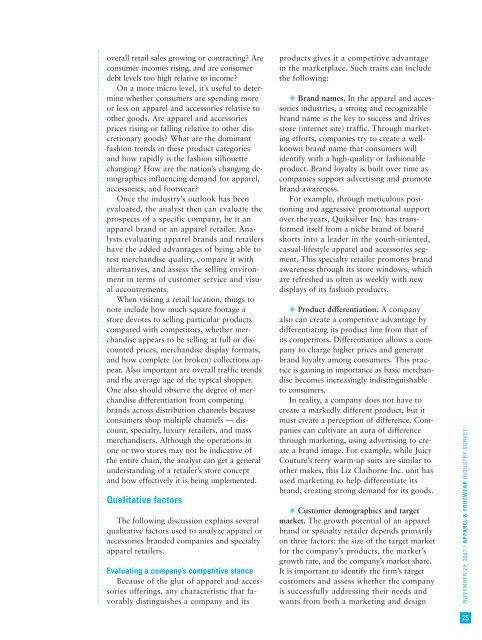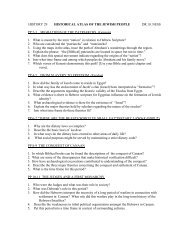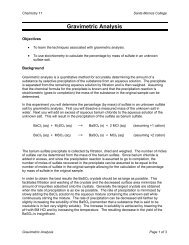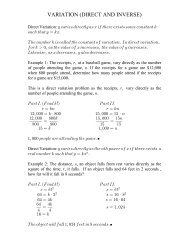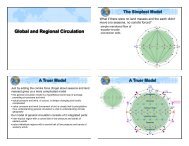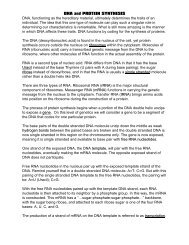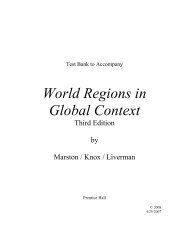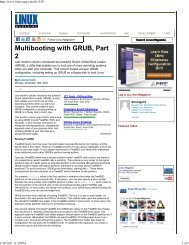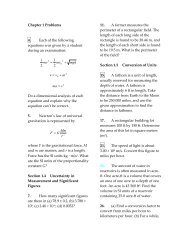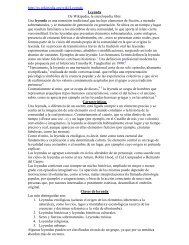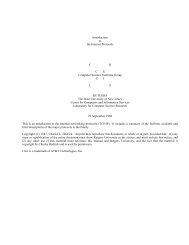You also want an ePaper? Increase the reach of your titles
YUMPU automatically turns print PDFs into web optimized ePapers that Google loves.
overall retail sales growing or contracting? Are<br />
consumer incomes rising, and are consumer<br />
debt levels too high relative to income?<br />
On a more micro level, it’s useful to determine<br />
whether consumers are spending more<br />
or less on apparel and accessories relative to<br />
other goods. Are apparel and accessories<br />
prices rising or falling relative to other discretionary<br />
goods? What are the dominant<br />
fashion trends in these product categories<br />
and how rapidly is the fashion silhouette<br />
changing? How are the nation’s changing demographics<br />
influencing demand for apparel,<br />
accessories, and footwear?<br />
Once the industry’s outlook has been<br />
evaluated, the analyst then can evaluate the<br />
prospects of a specific company, be it an<br />
apparel brand or an apparel retailer. Analysts<br />
evaluating apparel brands and retailers<br />
have the added advantages of being able to<br />
test merchandise quality, compare it with<br />
alternatives, and assess the selling environment<br />
in terms of customer service and visual<br />
accoutrements.<br />
When visiting a retail location, things to<br />
note include how much square footage a<br />
store devotes to selling particular products<br />
compared with competitors, whether merchandise<br />
appears to be selling at full or discounted<br />
prices, merchandise display formats,<br />
and how complete (or broken) collections appear.<br />
Also important are overall traffic trends<br />
and the average age of the typical shopper.<br />
One also should observe the degree of merchandise<br />
differentiation from competing<br />
brands across distribution channels because<br />
consumers shop multiple channels — discount,<br />
specialty, luxury retailers, and mass<br />
merchandisers. Although the operations in<br />
one or two stores may not be indicative of<br />
the entire chain, the analyst can get a general<br />
understanding of a retailer’s store concept<br />
and how effectively it is being implemented.<br />
Qualitative factors<br />
The following discussion explains several<br />
qualitative factors used to analyze apparel or<br />
accessories branded companies and specialty<br />
apparel retailers.<br />
Evaluating a company’s competitive stance<br />
Because of the glut of apparel and accessories<br />
offerings, any characteristic that favorably<br />
distinguishes a company and its<br />
products gives it a competitive advantage<br />
in the marketplace. Such traits can include<br />
the following:<br />
◆ Brand names. In the apparel and accessories<br />
industries, a strong and recognizable<br />
brand name is the key to success and drives<br />
store (internet site) traffic. Through marketing<br />
efforts, companies try to create a wellknown<br />
brand name that consumers will<br />
identify with a high-quality or fashionable<br />
product. Brand loyalty is built over time as<br />
companies support advertising and promote<br />
brand awareness.<br />
For example, through meticulous positioning<br />
and aggressive promotional support<br />
over the years, Quiksilver Inc. has transformed<br />
itself from a niche brand of board<br />
shorts into a leader in the youth-oriented,<br />
casual-lifestyle apparel and accessories segment.<br />
This specialty retailer promotes brand<br />
awareness through its store windows, which<br />
are refreshed as often as weekly with new<br />
displays of its fashion products.<br />
◆ Product differentiation. A company<br />
also can create a competitive advantage by<br />
differentiating its product line from that of<br />
its competitors. Differentiation allows a company<br />
to charge higher prices and generate<br />
brand loyalty among consumers. This practice<br />
is gaining in importance as basic merchandise<br />
becomes increasingly indistinguishable<br />
to consumers.<br />
In reality, a company does not have to<br />
create a markedly different product, but it<br />
must create a perception of difference. Companies<br />
can cultivate an aura of difference<br />
through marketing, using advertising to create<br />
a brand image. For example, while Juicy<br />
Couture’s terry warm-up suits are similar to<br />
other makes, this Liz Claiborne Inc. unit has<br />
used marketing to help differentiate its<br />
brand, creating strong demand for its goods.<br />
◆ Customer demographics and target<br />
market. The growth potential of an apparel<br />
brand or specialty retailer depends primarily<br />
on three factors: the size of the target market<br />
for the company’s products, the market’s<br />
growth rate, and the company’s market share.<br />
It is important to identify the firm’s target<br />
customers and assess whether the company<br />
is successfully addressing their needs and<br />
wants from both a marketing and design<br />
NOVEMBER 29, 2007 / APPAREL & FOOTWEAR INDUSTRY SURVEY<br />
25


